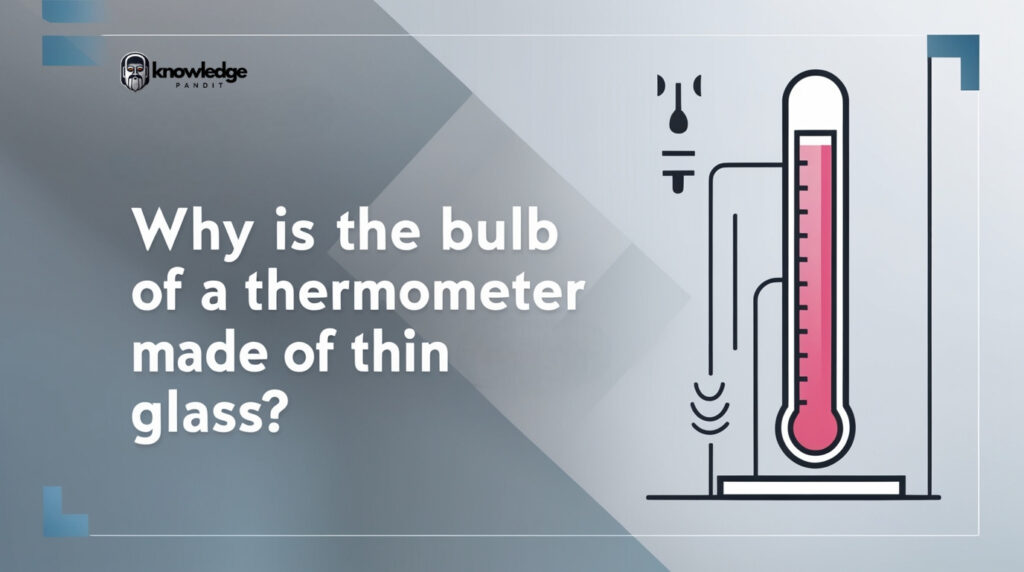The Bulb of the Thermometer is made thin. Why?
The bulb of a thermometer is made of thin glass to enhance the heat transfer from the environment to the liquid inside (typically mercury or spirit). Here’s why the design is so important:
- Glass as an Insulator: Glass is a poor conductor of heat, which helps maintain the integrity of the thermometer but also slows down heat transfer.
- Mercury’s Role: Mercury inside the thermometer is a metal that conducts heat well, so a quick transfer of heat is necessary for accurate readings.
- Thin Glass for Faster Heat Transfer: The thinner the glass, the quicker the temperature can be absorbed by the mercury or spirit liquid, speeding up the reading.
- Shorter Heat Travel Distance: A thinner bulb reduces the distance heat has to travel, improving the accuracy and speed of temperature changes.

Fun Facts About Thermometers and Heat Transfer
- Glass Thermometers vs. Digital Thermometers: While glass thermometers rely on physical heat transfer, digital thermometers use electronic sensors to measure temperature changes.
- Why Mercury?: Mercury is used in thermometers because it expands and contracts uniformly with temperature changes, providing a precise reading.
- Historical Use: The first thermometers, created by Galileo in the 16th century, used alcohol or water, but mercury became the standard for its accurate and consistent thermal response.





thanks for the info 🙂
great article